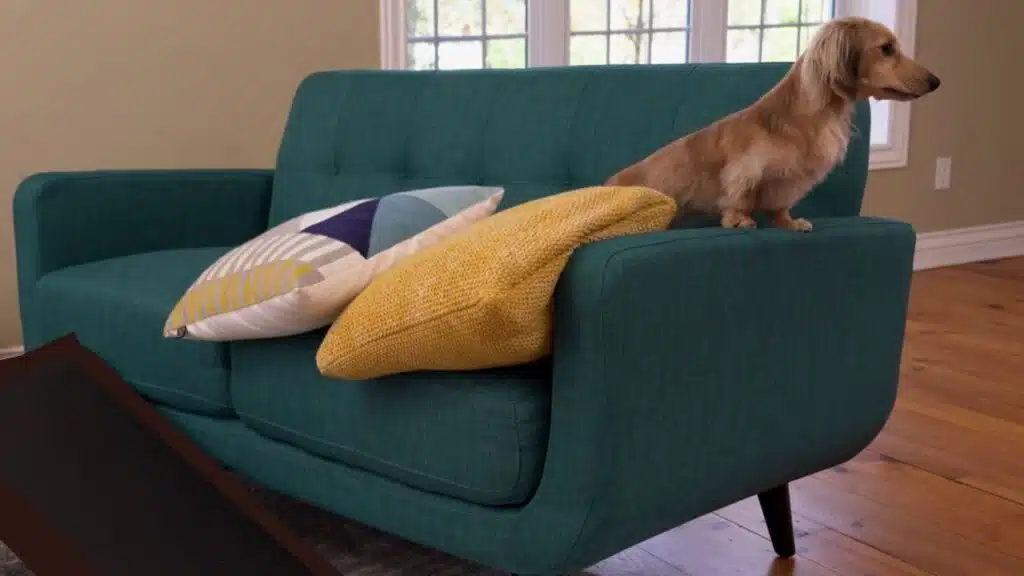DOG RAMP TRAINING
At PETPROTECT, we frequently receive inquiries about training dogs to use our dog ramps. Fortunately,training your pup to use a dog ramp is easier than you might think. Dogs are naturally curious and eager to please, making them excellent candidates for learning new skills quickly.
watch our training video!
CERTIFIED DOG TRAINER AND CANINE BEHAVIORIST. Surprise!! Surprise!! It Has cute Doggo!!
Pet Protect Ramp
Welcome to our latest video on training dogs to use a ramp! In this tutorial, we’ll guide you through the steps to help your furry friend master this useful skill. We’re excited to collaborate with RAGINI BHANDARI, a renowned canine behaviorist and certified dog trainer, who brings their expertise to ensure a fun and effective training session. Watch and learn how to make your dog’s life easier and more comfortable!
KEY THINGS TO REMEMBER WHEN TRAINING YOUR DOG
Key Things to Avoid While training
3 steps to Dog ramp mastery
Step 1: Familiarity
Take the following steps to ensure a smooth transition and create a positive association with dog ramp training . Firstly, leave the dog ramp flat on the floor, allowing your dog to approach and explore it at their own pace. Dogs often rely on their sense of smell, so allowing them to sniff and inspect the ramp will help them become more comfortable.
As your dog shows interest in the ramp, you can entice them further by placing their favorite toy around the ramp and eventually on it. This will encourage them to interact with the ramp and build confidence in stepping onto its surface. Take your time with this process, and let your dog adjust gradually. Once your dog seems at ease with the presence of the ramp, it’s time to encourage them to walk on it.
Use positive reinforcement, such as treats and verbal praise, to motivate them to walk the full length of the ramp back and forth. The treats will make the experience enjoyable for your furry friend, reinforcing that the ramp is a fun and rewarding place to explore.
Remember to be patient throughout this process, as dogs adapt at their own pace. Once your dog is confidently walking on the ramp and seems comfortable with it, you can proceed to step 2 with the assurance that they are ready to embrace the next training phase.
Step 2: Introducing The Incline
Now that your dog is comfortable with the flat ramp, it’s time to introduce the incline gradually. Begin with the ramp set to the minimum (lowest level) setting. Remember, it doesn’t have to reach the top of the couch; it’s best to set it slightly lower, especially for larger dogs with longer legs.
Use a trail of treats along the ramp to entice your dog to navigate the incline. This technique keeps their focus on each small step and rewards their progress. Lead your dog up the ramp with treats and then guide them back down gently.
Leashes and harnesses can also be helpful tools to guide your dog gently. Slight pull of leash combine with smell of their favourite treat can help them use the ramp quickly. The idea is to provide subtle guidance and support, letting them gain confidence in using the ramp at their own pace.
Consistent practice is key to success, so conduct multiple training sessions with the ramp. Make sure each session remains fun and rewarding for your dog. This training is not solely about teaching them to use the ramp; it’s about forming a habit. Repetition and positive reinforcement will help establish the desired behaviour.
Speaking of habit training, our next step will focus on developing a routine to reinforce using the ramp in various situations.
Step 3: Training Habit
Having established a habit through repetition, we move forward to the next stage of ramp training. Instead of leading your dog up and down the ramp, take a step back and call them from a short distance. The objective here is to allow your furry friend to make their own decision to use the ramp without direct guidance. Stay close enough to intervene if necessary, preventing any missteps.
A useful strategy to encourage ramp usage is to create a temporary barrier, that blocks their jumping path, around the couch with soft pillows or some other soft material. This leaves your dog with no option but to choose the ramp for access, gently nudging them in the right direction.

As your dog becomes more confident in using the ramp independently, gradually remove the barriers and minimise direct guidance. Keep reinforcing their progress with positive reinforcement, celebrating each successful ramp usage. Regular practice and incorporating the ramp into daily routines will help solidify the habit. Be patient, stay consistent, and maintain a positive training atmosphere to ensure a smooth and enjoyable ramp training journey for both you and your Fur Babies.
Be patient and consistent throughout the habit training process. Every dog learns at their own pace, so celebrate progress and stay positive, ensuring the training experience remains enjoyable for both you and your beloved furry friend.


